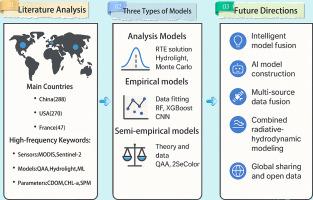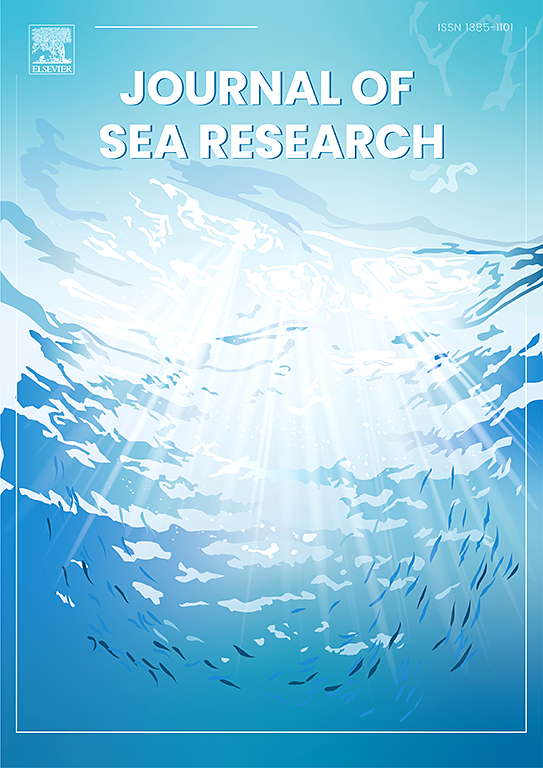水彩遥感模型:反演机制、优化和挑战
IF 2.9
4区 地球科学
Q2 MARINE & FRESHWATER BIOLOGY
引用次数: 0
摘要
水色遥感在水生环境监测中发挥着至关重要的作用,但在模型适用性和数据集成方面仍存在重大挑战。本文对Web of Science核心馆藏中收录的577篇wcrs相关文献进行了全面的文献计量分析,确定了研究热点、国际合作和模型演变趋势。分析显示,中国在论文发表数方面领先,而美国在引文影响和国际合作方面占据主导地位,研究产出与影响力之间存在差距。关键词共现图显示,光学复杂水体的生物光学建模、富营养化监测和高分辨率遥感是关键的研究前沿。模型的主要类型有经验、分析、半分析和机器学习。通过有代表性的案例研究,对其应用范围、局限性和优化策略进行了系统的分类和评估。持续的挑战仍然存在,特别是在数据质量、算法泛化和多源数据融合方面。为了解决这些问题,提出了五个未来的研究方向,包括发展物理知情的人工智能模型和创建全球数据共享平台。这项工作为在日益复杂的水和水生条件下推进WCRS理论和应用提供了知识图谱和实践指导。本文章由计算机程序翻译,如有差异,请以英文原文为准。

Water color remote sensing models: Inversion mechanisms, optimization, and challenges
Water color remote sensing plays a vital role in monitoring aquatic environments, yet significant challenges remain in model applicability and data integration. This review presents a comprehensive bibliometric analysis of 577 WCRS-related articles indexed in the Web of Science Core Collection, identifying research hotspots, international collaborations, and model evolution trends. The analysis reveals that China leads in publication count, while the United States holds a dominant position in citation impact and international collaboration, highlighting a gap between research output and influence. Keyword co-occurrence mapping shows that bio-optical modeling, eutrophication monitoring, and high-resolution sensing in optically complex waters are key research frontiers. The main types of models such as empirical, analytical, semi-analytical, and machine learning. Are systematically categorized and assessed based on their application scope, limitations, and optimization strategies through representative case studies. Persistent challenges remain, particularly in data quality, algorithm generalization, and the fusion of multi-source data. To address these issues, five future research directions are proposed, including the development of physics-informed AI models and creation of global data-sharing platforms. This work provides both a knowledge map and practical guidance to advance WCRS theory and applications under increasingly complex water and aquatic conditions.
求助全文
通过发布文献求助,成功后即可免费获取论文全文。
去求助
来源期刊

Journal of Sea Research
地学-海洋学
CiteScore
3.20
自引率
5.00%
发文量
86
审稿时长
6-12 weeks
期刊介绍:
The Journal of Sea Research is an international and multidisciplinary periodical on marine research, with an emphasis on the functioning of marine ecosystems in coastal and shelf seas, including intertidal, estuarine and brackish environments. As several subdisciplines add to this aim, manuscripts are welcome from the fields of marine biology, marine chemistry, marine sedimentology and physical oceanography, provided they add to the understanding of ecosystem processes.
 求助内容:
求助内容: 应助结果提醒方式:
应助结果提醒方式:


